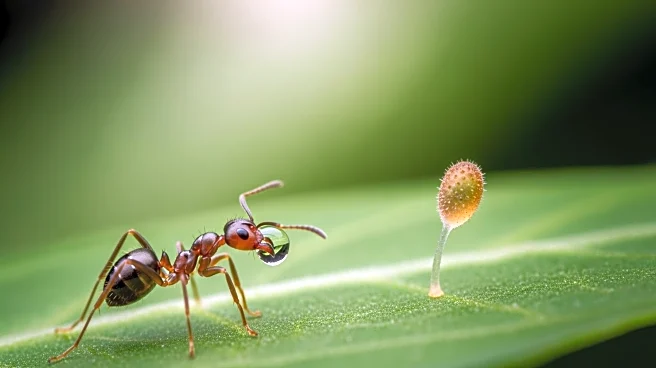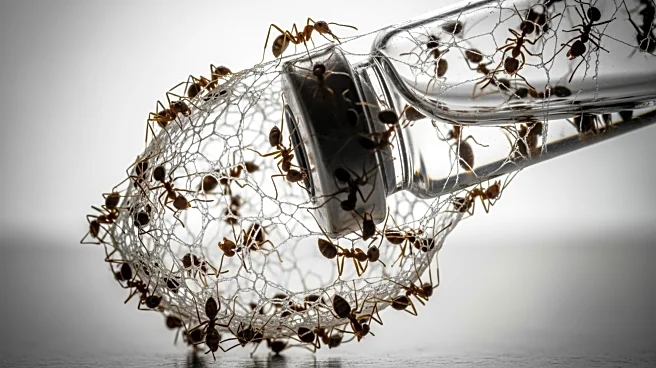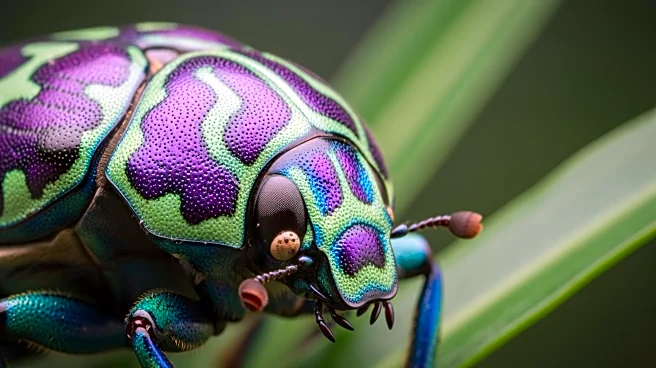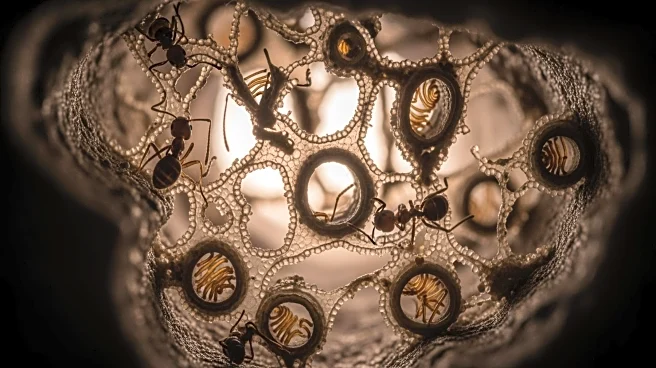What's Happening?
A recent study has investigated the synergistic effects of the insecticide flupyradifurone and a fungal pathogen on the ant species Lasius niger. The research involved exposing ant colonies to varying
concentrations of flupyradifurone, followed by a challenge with the fungal pathogen Metarhizium brunneum. The study found that the combination of the insecticide and the pathogen resulted in increased mortality rates among the ants, suggesting a synergistic interaction. This research provides insights into how chemical and biological stressors can interact to affect insect populations.
Why It's Important?
Understanding the interactions between chemical insecticides and biological pathogens is crucial for developing effective pest management strategies. The findings of this study could influence how agricultural practices are designed, particularly in terms of minimizing unintended ecological impacts. The synergistic effects observed could lead to more efficient pest control methods, potentially reducing the need for high concentrations of chemical insecticides, which can have harmful environmental consequences. This research is significant for industries reliant on pest control, such as agriculture and forestry.
What's Next?
Further research is needed to explore the mechanisms behind the observed synergistic effects and to determine if similar interactions occur in other insect species. The study may prompt regulatory bodies to reassess the use of flupyradifurone and similar insecticides, considering their potential to enhance the effects of biological pathogens. Stakeholders in agriculture and environmental conservation will likely be interested in the outcomes of such research, as it could lead to changes in pest management practices and policies.
Beyond the Headlines
The study highlights the importance of considering ecological interactions in pest management. It raises questions about the ethical implications of using chemical insecticides that may inadvertently increase the vulnerability of non-target species to pathogens. Additionally, the research may inspire further investigations into alternative pest control methods that are more environmentally sustainable.











